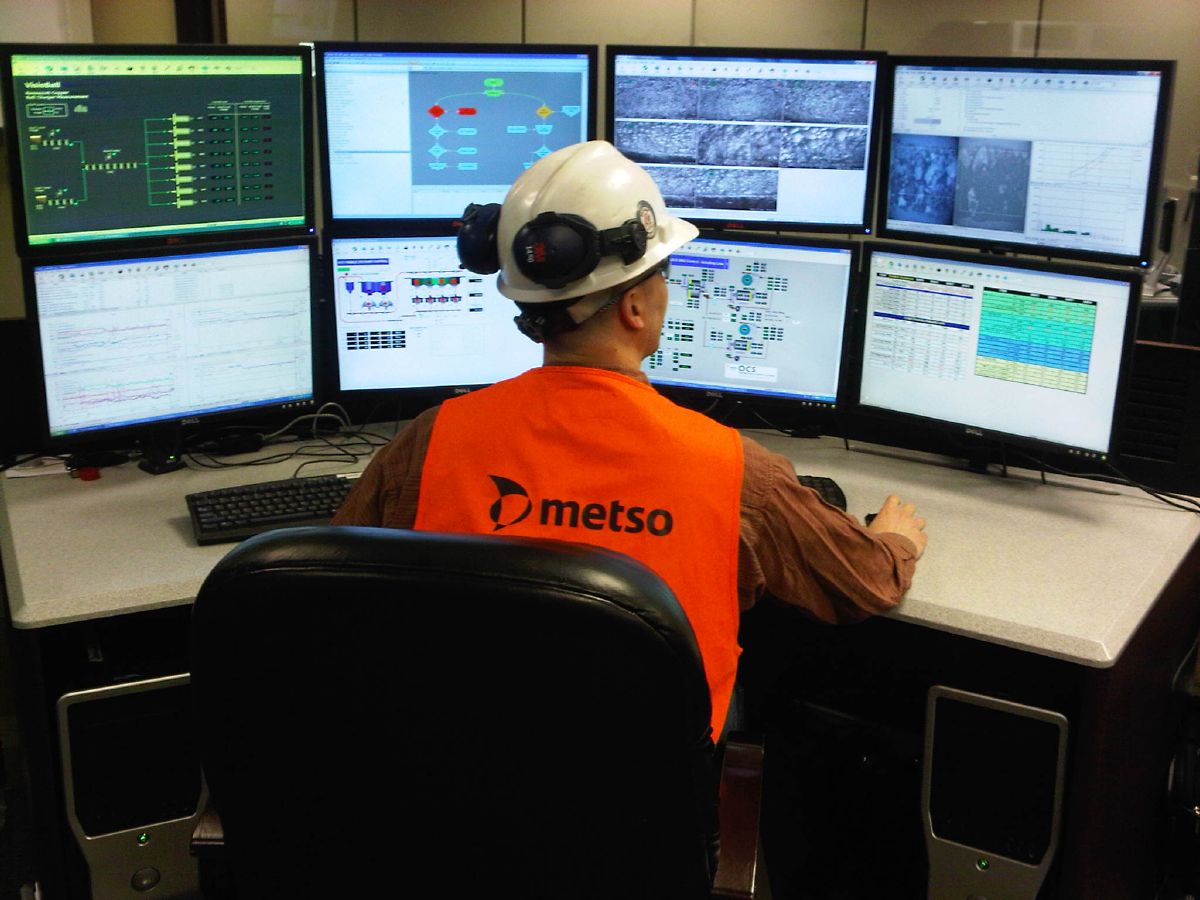3. Remote diagnosis is possible with data analysis.
True
Your designated experts can use the variety of analytics at their disposal to remotely diagnose and help you resolve equipment performance anomalies.
On-site operators may be able to see or hear that something is wrong in an asset. Rather than stopping production and waiting for technicians to troubleshoot the problem, your remote experts can get on the case while production is running. They can review the equipment’s health and performance information to investigate the anomaly. And when they pinpoint the cause of the problem, they can coordinate with on-site workers to schedule the necessary repair work during planned downtime.
For example, one mine in Australia was experiencing excessive vibration in one of its crushers. Remote experts looked at the data coming from the machine and discovered the problem: The machine coming loose from its foundation.
With these insights, the mining company was able to relatively quickly and easily fix the problem. And doing so proactively – before the issue led to a big breakdown – helped the company avoid costly repairs and weeks of lost production.
4. Data can only give insights to the past.
False
OEM partner experts can enable proactive maintenance with early identification of known equipment failures. Data from dozens of sensors on a single machine can be combined with data from other sources, like instrumentation, automation equipment and repair reports. Experts can monitor and analyze this data to gain a detailed understanding of your operations, including what is and isn’t normal performance.
Eventually, they can identify the patterns that indicate failures and give you the opportunity to repair or replace components before they cause expensive downtime events. And again, this work can be done during a scheduled downtime to help maximize your production uptime.
What’s more, the insights that experts gain from your operations will only grow. This can help them proactively address issues not only in individual machines but also in your processes and entire mining circuit.
5. It’s not necessary to get a partner when developing proactive maintenance.
True
It is not necessary, and you can build your own solution for your proactive maintenance strategy. But this approach can create challenges.
While it is true that you can build up your own solution, this approach is very costly as well as access to experts on individual equipment could be very limited. Also the ability to predict failures will be much slower because of having a lack of data and information from past experiences and the ability to “close the loop” with supply chain will be much more difficult.
You need to find the right technology and make sure it’s suitable for your application. You need to create a strategy for deploying it. And you need to develop a plan – and locate the right people – to use and maintain the solution for the long-term. Given these obstacles, it’s easy to see why some mining companies are opting to partner with suppliers and experts with validated and ready-to-use solutions instead of building their own.
By partnering, you gain access to all the technology needed to collect production data and contextualize it in the cloud so mining experts can review, analyze, and prescribe action. This path carries much less risk compared to an unproven and untested homegrown solution. Additionally, since a solution like this is predeveloped and essentially plug and play, you can more quickly implement it and begin realizing value.
On top of the technology, partnering means you get access to the support of dedicated OEM experts. These remote experts are trained to spot trends in alarms and help interpret the machine data that is specific to your operations. They analyze your data, build trends and work with your on-site teams to help them make proactive and preventive decisions that maximize the uptime of your machines.
This approach can also simplify support. Instead of being responsible for maintaining the technology and having to work with multiple vendors, you get one partner that is responsible for supporting everything.
The autonomous mine starts here
Mining is moving toward more autonomous operations as companies seek to counter the skills shortage, improve efficiencies and reduce safety risks to workers. But you can’t have an autonomous mine if it’s prone to unplanned downtime.
Creating a proactive maintenance strategy – with the data and the right expertise – can help drive your operations closer to zero unplanned downtime. That can give you the initial confidence you need to start moving workers to a central location and create safer, connected and efficient autonomous mines.
Original article first published by Mining Magazine.

